Gamay and Sauvignon Blanc’s Strong Presence in Touraine, the Heart of Loire Valley, And Rightfully So. Four Producers Represented in 9-Bottle Pack ($259), 5 Red And 4 White
John Updike refers to the French as ‘that strange race, neither northern nor southern, both sensual and ascetic, the epitome in turn of chivalry and the bourgeoisie.’
Updike, a prolific writer of fiction, poetry, non-fiction and art/literary reviews, never got a chance to weigh in on Touraine which—like him—wants to be everything to everybody.
Under The Radar
Sitting east of Vouvray, frenetic Touraine produces red wine, white wine, pink wine and sparkling wine; regulation permits Cab Franc, Malbec, Pinot Noir, Cabernet Sauvignon and Gamay for the reds while the list of allowable whites includes Chardonnay, Chenin Blanc and Sauvignon Blanc (making up 43% of the plantings in 12,350 acres of designated vineyards). There is also an interesting local variety called Menu Pineau and also a sharp focus on single-varietal bottlings, allowing a showcase for the unique contours these familiar grapes adopt in Touraine terroir.
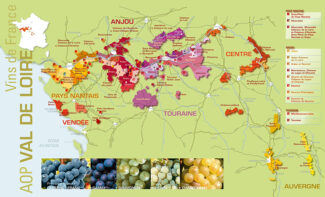
Of course, some Touraine wines are good, not great, but rest assured that the photo ops are great, not good: Many of the Loire’s most admired and picturesque grand châteaux dot the Touraine countryside.
From this near-fairy tale setting, we have winnowed some superb examples of Gamay and Sauvignon created by the region’s top producers; vignerons who put a strong emphasis on varietal character and terroir expression generally unencumbered by oak. These are excellent choices for either sipping or supper; they are low in alcohol and pair especially well with the sumptuous rillettes and rillons of Touraine. The package is comprised of 9 different bottles (5 red and 4 white wines) for $259.
About Touraine, The Heart of The Loire
Most people are more familiar with the Loire’s bookends, Muscadet and Sancerre. But between them lie 79 AOPs representing what InterLoire (the official organization of producers, merchants and traders involved in the production and promotion of Loire wines) calls, “The most extensive, diversified and original vineyard in Europe.”
The AOP covering Touraine stretches from Anjou to the west to the Sologne in the east, converging near the point where the Loire River and its tributaries meet. It covers 104 communes in Indre-et-Loire and 42 in Loir-et-Cher.
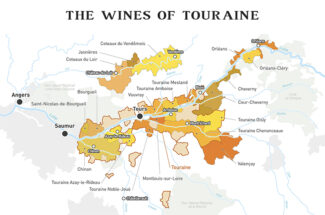
Most of the vineyards are located southeast of Tours on the slopes that dominate the Cher River and the land between the Cher and the Loire. With nearly 13,000 acres under vine, the climate varies dramatically as you move inland; oceanic conditions dominate the west, becoming more continental as you move east. These climatic differences combined with varied soils determine the choice of grape variety planted (with later-ripening varieties grown in the west and earlier-ripening ones in the east) and account for the wide variety of wine styles produced.
Terroir is as diverse as the climate, another key factor in fitting vine to site. Broadly ranging from chalky tuffeau to flinty-clay shot through with sand and gravels from eons of deposits from the Loire, even the same grape will display markedly different profiles depending on where it is planted. Nearly all the favored grapes are cool climate varieties and the wines tend to show vibrant acidity and delicate, clean, precise flavors.
Gamay & Sauvignon’s Strong Presence in Touraine
Ever since Philippe de Bourgogne cast Gamay from the bosom of Burgundy six centuries ago, the variety has been derided and even despised outside its spiritual home, Beaujolais. Folks who were soured by the sweet and fruity Nouveau cult may bring that prejudice into Touraine, but that would be a mistake: Although once in the shadow of Anjou Gamay, select vignerons in Touraine have made monster strides with Gamay over the past couple decades and these wines now edge out the Gamays of Anjou in depth and complexity. They tend to be medium-bodied with a musky tone that share center stage with aromas of fern and capers intermingled with flinty minerals and plummy notes.
Sauvignon Blanc, on the other hand, comes with no such baggage; if anything, it’s a marvelous counterpart to Bordeaux’s version, which tends to be forgettable and is nearly always blended with Muscadelle and/or Sémillon. In general, Sauvignon Blanc is fairly delicate and sensitive, and as a result, strongly reflects the terroir where it is grown. Compared to Sancerre and Pouilly-Fumé, Touraine’s Sauvignon Blanc tends to be slightly rounder richer, weightier and more aromatic, with flavors of gooseberry and kiwi emerging alongside green apple, lime and flint.
The Loire Spawns Off Many ‘Natural’ Wines
Loire wears the nickname the Garden of France, but for winemakers, it is also the Laboratory of France. In varying degrees, the established rules of the AOC (or the Europe-wide AOP) seem restrictive to certain winemakers in the Loire, who are happy to create personal-statement wines using rules of their own and label their product not by a narrow appellation names allowed by the AOP, but as the more general ‘Vin de France’ or VdF.
These particular VdF wines display their origins as faithfully as their AOP counterparts, although many are also as much about the process—or lack of process—involved in their creation. For a lover of natural wines—wines without intervention, grown without synthetics, fermented on native yeasts and bottled without sulfur—Loire is a small Valhalla.
What should you expect from natural wines? Great wines are made in the vineyard and that’s where the differences can first be seen. Since the vine exists as part of an ecosystem, animals and insects are encouraged to propagate among them; vines are not manicured and are grown without chemicals while between them, cover crop is allowed to flourish. Ambient yeast cells are found naturally on grape skins, and once the crop hand-harvested, this organic yeast encourages fermentation without additives. The wines are bottled without fining or filtration and as a result may (or may not) appear cloudy in the glass. As for ‘off’ or funky tastes, those familiar pejorative terms for natural wines are largely undeserved; they are the result of substandard techniques by flailing winemakers who are unlucky or out of their depth—something that can happen to conventional wine as well. When made under scrupulously clean conditions using meticulous technique, natural wines are full and fresh, crisp and alive, and display earthy flavors of fruits, flowers and herbs.
In other words, if your winemaker does honor to his grapes, her wine will do honor to your palate.
Clos Roussely
Clos Roussely was once a lowly outbuilding of the great fortification at Angé-sur-Cher and as it happens, its five-foot-thick Tuffeau walls serve to insulate the winery as efficiently as they once held off Attila the Hun. Not only that, but the 250-year-old hand-dug caves beneath it are ideal for aging the remarkable wines of Vincent Roussely. The transition from barn to vignoble began in 1917, when Anatole Roussely became the first of four generations to dedicate his life to detail; Vincent Roussely, his great-grandson, today works this remarkable terroir—22 acres of clay and limestone peppered with pockets of silex.
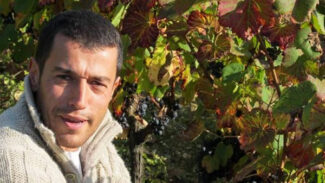
Vincent Roussely
“It was my childhood dream to work these soils,” says Roussely, who inherited the estate in 2001. “The terroir is ideal for Sauvignon Blanc, which makes up about 80% of our plantings, but at the heart of Roussely is a small plot of old-vine Gamay. We also have Côt (Malbec), Pineau d’Aunis and a little Cabernet Franc. We have always farmed organically, both for the health of the vines and out of social responsibility, but we were officially certified in 2007.”
The old-school methodology runs through every aspect of the winemaking process. Grapes are hand-harvested and are subject to slow, natural fermentation in the cool catacombs; Gamay undergoes the familiar Méthode Beaujolais, partial carbonic maceration in which some whole grapes are kept intact and begin alcoholic fermentation within the confines of their skins.
Evolving from tradition to technology, Roussely continues to experiment, using concrete eggs for some of his fermentations. “Innovative adaptation means more than simply exploring new techniques,” he says. “It also involves a commitment to ecological responsibility. Right now, about 65% of Loire Valley vineyards are organic and it’s our goal to see that number at 100% by 2030.”
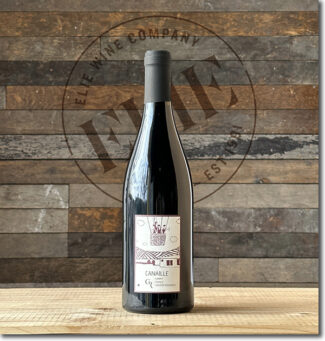 •1• Clos Roussely ‘Canaille’, 2021 VdF Loire-Touraine ‘Gamay’ ($21) Red
•1• Clos Roussely ‘Canaille’, 2021 VdF Loire-Touraine ‘Gamay’ ($21) Red
‘Canaille’ is the French word for ‘scoundrel.’ 100% Gamay from vines between 25 and 50 years old grown organically on clay and limestone. Aged six months in stainless steel, the old vines add a striking depth to this exuberant Gamay, replete with notes of crushed raspberry, black cherry and nutmeg.
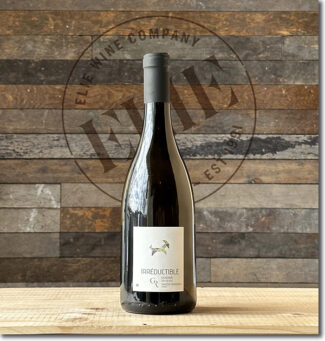 •2• Clos Roussely ‘Irréductible’, 2019 VdF Loire-Touraine ‘Sauvignon’ ‘natural’ ($34) White
•2• Clos Roussely ‘Irréductible’, 2019 VdF Loire-Touraine ‘Sauvignon’ ‘natural’ ($34) White
Refusing to use sulfur at bottling time is what cost this superb, 100% Sauvignon Blanc its AOP status, but no matter: Vincent Roussely is happy to let it shine through the VdF ‘Loire-Touraine.’ The wine shows complex aromas of white peach, citrus and sappy acidity with a bracing salinity at the finish.
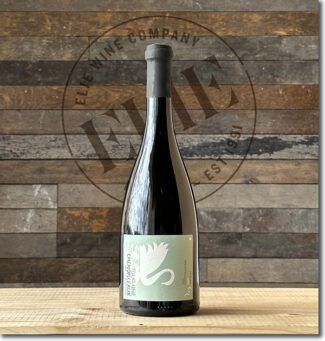 •3• Clos Roussely, 2020 Touraine-Chenonceaux Blanc ($29) White
•3• Clos Roussely, 2020 Touraine-Chenonceaux Blanc ($29) White
Touraine-Chenonceaux is its own unique appellation, inextricably linked with the Château of the same name. The vines used for Roussely’s wine are planted on slopes with good natural drainage where soils are mainly limestone, siliceous clay and perruches—the flint-based earth commonly found in the Loire terroirs.
100% unoaked Sauvignon Blanc with a minimum of sulfur dioxide at bottling; the wine shows stone fruit on the nose, especially white peaches, and carries a minerality through to a crisply acidic lemon-lime finish.
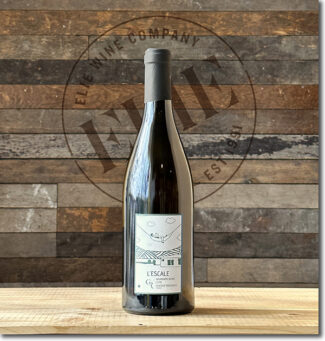 •4• Clos Roussely ‘L’Escale’, 2020 Touraine Blanc ($20) White
•4• Clos Roussely ‘L’Escale’, 2020 Touraine Blanc ($20) White
100% Sauvignon Blanc from vines that have grown in shale limestone for 10 to 40 years and are Guyot pruned. Fermentation is done using indigenous yeasts with occasional lees stirring over the course of élevage. Grapes are hand-harvested at modest yields of 50hl/ha, far less than 60hl/ha that the appellation allows. A very mineral-driven wine, it might be viewed as an affordable Sancerre alternative as it displays a similar profile: Newly mown grass, chamomile, chervil, thyme, honeysuckle and lime peel.
Domaine de la Charmoise
Henry Marionnet’s family has owned de la Charmoise since the 19th century, and he places such a premium on quality that he only produces certain wines in truly good vintages. Located within the quaint village of Soings deep in the forests of La Sologne, the family continues (as they always have done) to quietly push the envelope by viewing each vintage as a challenge presenting the goal of surpassing the last.
Between 1967 and 1978, nearly all Charmoise vines were replanted, so by now, they are all over 30 years old. The two key varieties are Gamay and Sauvignon Blanc, but the estate produces unique wines from grapes not found elsewhere in the world. ‘Provignage’, for example is produced from Romorantin, a rare white grape that produces herbaceous and sometimes tropical-fruit wines; Cépages Oubliés is made from the almost obsolete clone of Gamay de Bouze.
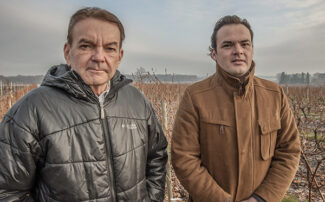
Henry and Jean-Sébastien Marionnet
A proponent of natural wines, Marionnet says, “My family has owned Domaine de la Charmoise since 1850; my father Claibert was a winemaker, of course, and I was expected to follow in his footsteps. But I never attended viticulture school—my parents were traditionalists and they didn’t want me coming back with revolutionary ideas. Therefore, my winemaking education involved working with the horses ploughing and clearing, and with a pickaxe, working the ground between the vines by hand. When I took over the domain in 1967, I began to change things. Some of the vines I inherited were of questionable merit, hybrids or similar sub-standard stock, so I set about replanting and expanding the vineyards. But I remained true to the words of the great Émile Peynaud who said, ‘Give me the most beautiful grapes in the world and I will make you the greatest wine in the world’.”
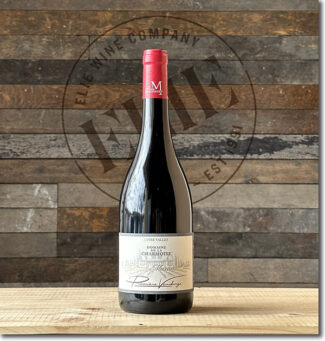 •5• Domaine de la Charmoise ‘Première Vendange’, 2021 Touraine ‘natural’ ($24) Red
•5• Domaine de la Charmoise ‘Première Vendange’, 2021 Touraine ‘natural’ ($24) Red
The Gamay that produces ‘Première Vendange’ is (as both Marionnet and the barons of Beaujolais would like to make clear) traditional Gamay Noir à Jus Blanc as opposed to the red-fleshed varieties often used to add color to other wines. The vines that make up this cuvée were planted in 1967 and 1978 on a combination of flinty stones in a mix of sand, gravel and clay. The fruit is picked by hand and whole-bunch fermented in stainless steel vats via carbonic maceration, a process continued by indigenous yeasts. The result is velvet smooth with lithe, ripe fruit beneath a floral canopy that shows hibiscus and violet and a touch of anise—certainly a rival to a top Beaujolais Villages.
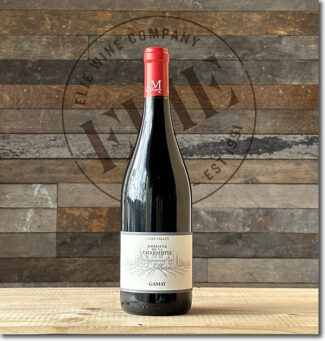 •6• Domaine de la Charmoise ‘Gamay’, 2020 Touraine ($20) Red
•6• Domaine de la Charmoise ‘Gamay’, 2020 Touraine ($20) Red
Made from 40-50-year-old Gamay grapes grown in soils known locally as ‘perruches,’ which means ‘parrot’ but is actually a combination of flinty stones in a mix of sandy gravel and clay. A luscious wine bursting with plum, açaí and blackcurrant followed by more complex notes of kirsch and coffee.
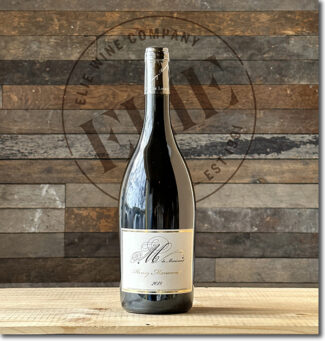 •7• M de Henry Marionnet ‘Sauvignon’, 2018 Touraine ‘natural’ ($38) White
•7• M de Henry Marionnet ‘Sauvignon’, 2018 Touraine ‘natural’ ($38) White
100% Sauvignon Blanc from the parcel that Marionnet considers to be the estate’s finest. Planted in 1970, these grapes only are permitted to make up ‘M’ in outstanding years to preserve the reputation of the label, which always promises rich, unctuous wines with brilliant energy and aromatics, massive focus and grip and acid precision.
Jérémy Quastana
Jérémy Quastana is a young vigneron who trained under Olivier Lemasson for a few years before snagging five acres of his own near Lemasson’s main plot in the Loir-et-Cher not far from Cheverny. Prior to that, Jeremy learned the trade at Marcel Lapierre’s Beaujolais winery and did a six-month internship at Clos Ouvert in Chile.
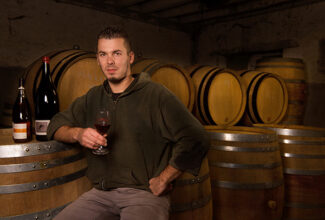 Jérémy Quastana, photo: Alberto Rodriguez
Jérémy Quastana, photo: Alberto Rodriguez
Quastana farms a single plot composed of young-vine Gamay, middle-aged Côt and old-vine Gamay planted on a gentle slope of clay over silex. Jeremy has not applied for AOP recognition, since—like many natural winemakers—he knows the challenge of following commission rules. His wines are unembellished—fresh, pure juice that may serve as a perfect aperitif on a warm day, but which always qualify as a serious approach to winemaking the natural way.
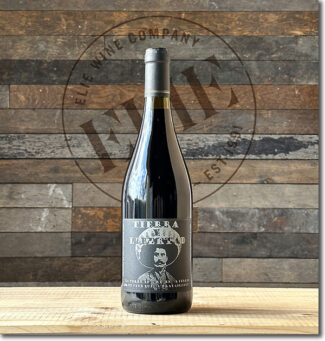 •8• Jérémy Quastana ‘Tierra y Libertad’, 2020 VdF Loire ‘Gamay’ Rouge ‘natural’ ($32) Red
•8• Jérémy Quastana ‘Tierra y Libertad’, 2020 VdF Loire ‘Gamay’ Rouge ‘natural’ ($32) Red
The name is from the famous phrase by Emiliano Zapata, whose picture features prominently on the label; Quastana considers himself a rebel, and his wines often reflect an atypical expression of a given varietal. This one, 100% Gamay, is no exception, showing brine-soaked wild berries, black pepper, cocoa and herbs.
Marie Thibault
“I grew up in the Loire Valley, but unlike many vignerons working in the Loire, I did not come from a winemaking family,” says Marie Thibault, adding, “But also unlike many of them, I have degrees in both biology and oenology.”
Marie Thibault began making wine in the early 2000s, working for a time with François Chidaine in Montlouis, where she fell in love with Chenin Blanc. In 2011, she founded her own nine acre estate on a single windy slope in Azay-le-Rideau, a lesser known commune of Touraine. She immediately converted to organics and has been certified with Ecocert since 2014. Among the natural elements in her vineyards is the flock of two dozen ewes that graze between the vine rows during the autumn; every ten days, they are penned inside a new hectare to keep the soil naturally fertile and the grass clipped.
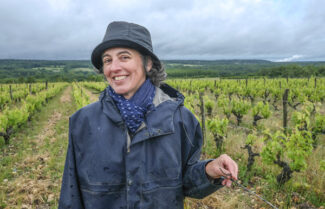
Marie Thibault, photo: Jean-Yves Bardin
“My vineyard is small, but the soils are extremely varied and as such, so are the grapes I grow. I work with Côt (Malbec), and have a special love for Gamay, Grolleau, Chenin Blanc and Sauvignon Blanc. Most of my vines are at least 50 years old. I compensate for small production by purchasing from organic estates nearby.”
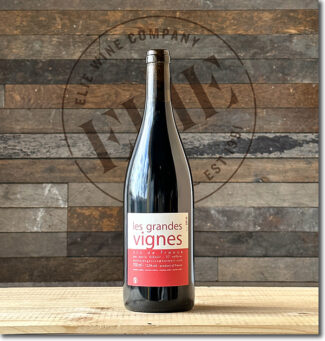 •9• Marie Thibault ‘Les Grandes Vignes’, 2018 VdF Loire ‘Gamay’ Rouge ‘natural’ ($41) Red
•9• Marie Thibault ‘Les Grandes Vignes’, 2018 VdF Loire ‘Gamay’ Rouge ‘natural’ ($41) Red
Thibault’s unique lens on Gamay is seen in this example produced from 50+ year-old vines she discovered growing adjacent to her plot on flinty silex soil. The vines were untrained and un-trellised, and harvest was exceptionally labor-intensive. She allows a 10-month maceration in order to shows off the Gamay’s savory side, with crisp rhubarb, earthy red berry notes and fine-grained, well-integrated tannins showcased.
- - -
Posted on 2023.02.15 in Touraine, France, Wine-Aid Packages
Featured Wines
- Notebook: A’Boudt Town
- Saturday Sips Wines
- Saturday Sips Review Club
- The Champagne Society
- Wine-Aid Packages
Wine Regions
Grape Varieties
Aglianico, Albarino, Albarín Blanco, Albarín Tinto, Albillo, Aleatico, Arbanne, Aubun, Barbarossa, barbera, Beaune, Biancu Gentile, bourboulenc, Cabernet Franc, Cabernet Sauvignon, Caino, Caladoc, Calvi, Carcajolu-Neru, Carignan, Chablis, Chardonnay, Chasselas, Clairette, Corvina, Cot, Counoise, Erbamat, Ferrol, Fiano, Frappato, Friulano, Fromenteau, Fumin, Garnacha, Gewurztraminer, Godello, Graciano, Grenache, Grolleau, Groppello, Juan Garcia, Lambrusco, Loureira, Macabeo, Macabou, Malvasia, Malvasia Nera, Marsanne, Marselan, Marzemino, Melon de Bourgogne, Merlot, Mondeuse, Montanaccia, Montepulciano, Morescola, Morescono, Moscatell, Muscadelle, Muscat, Natural, Nero d'Avola, Parellada, Patrimonio, Petit Meslier, Petit Verdot, Pineau d'Aunis, Pinot Auxerrois, Pinot Blanc, Pinot Gris, Pinot Meunier, Pinot Noir, Poulsard, Prieto Picudo, Rondinella, Rousanne, Roussanne, Sangiovese, Sauvignon Blanc, Savignin, Semillon, Souson, Sparkling, Sumoll, Sylvaner, Syrah, Tannat, Tempranillo, Trebbiano, Trebbiano Valtenesi, Treixadura, Trousseau, Ugni Blanc, vaccarèse, Verdicchio, Vermentino, Viognier, Viura, Xarel-loWines & Events by Date
- April 2024
- March 2024
- February 2024
- January 2024
- December 2023
- November 2023
- October 2023
- September 2023
- August 2023
- July 2023
- June 2023
- May 2023
- April 2023
- March 2023
- February 2023
- January 2023
- December 2022
- November 2022
- October 2022
- September 2022
- August 2022
- July 2022
- June 2022
- May 2022
- April 2022
- March 2022
- February 2022
- January 2022
- December 2021
- November 2021
- October 2021
- September 2021
- August 2021
- July 2021
- June 2021
- May 2021
- April 2021
- March 2021
- February 2021
- January 2021
- December 2020
- November 2020
- October 2020
- September 2020
- August 2020
- July 2020
- June 2020
- May 2020
- April 2020
- March 2020
- February 2020
- January 2020
- December 2019
- November 2019
- October 2019
- September 2019
- August 2019
- July 2019
- June 2019
- May 2019
- April 2019
- March 2019
- February 2019
- January 2019
- December 2018
- November 2018
- October 2018
- September 2018
- August 2018
- July 2018
- June 2018
- May 2018
- April 2018
- March 2018
- February 2018
- January 2018
- December 2017
- November 2017
- October 2017
- September 2017
- August 2017
- July 2017
- June 2017
- May 2017
- April 2017
- March 2017
- February 2017
- January 2017
- December 2016
- November 2016
- October 2016
- September 2016
- August 2016
- July 2016
- June 2016
- May 2016
- April 2016
- March 2016
- February 2016
- January 2016
- December 2015
- November 2015
- October 2015
- September 2015
- August 2015
- July 2015
- June 2015
- May 2015
- April 2015
- March 2015
- February 2015
- January 2015
- December 2014
- November 2014
- October 2014
- September 2014
- August 2014
- July 2014
- June 2014
- April 2014
- March 2014
- February 2014
- January 2014
- December 2013
- November 2013
- October 2013
- September 2013
- August 2013
- July 2013
- June 2013
- May 2013
- April 2013
- March 2013
- February 2013
- January 2013
- December 2012
- November 2012
- October 2012
- February 2004
Search



